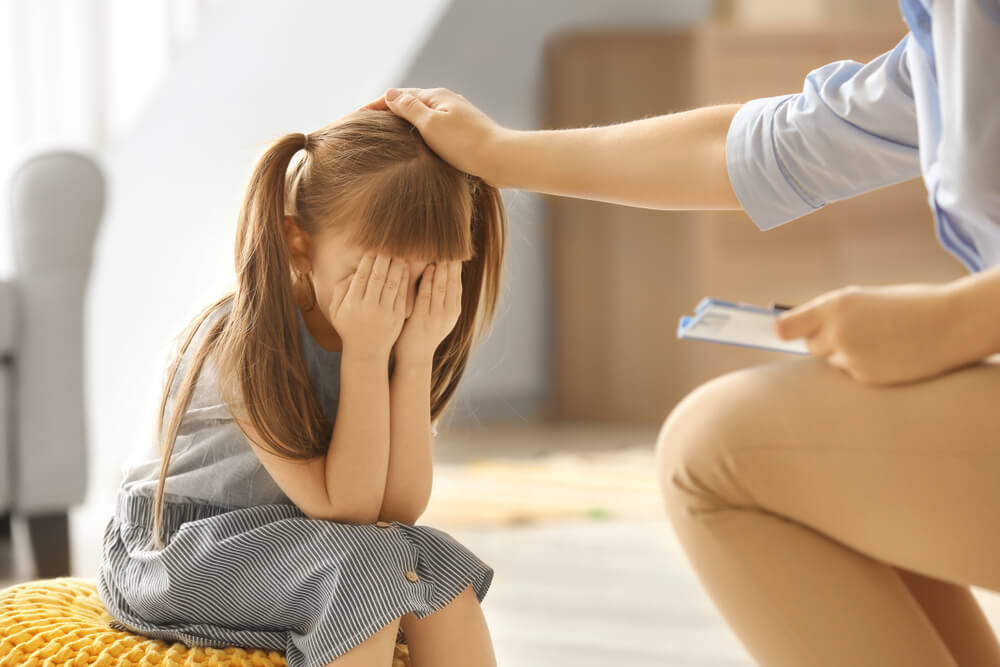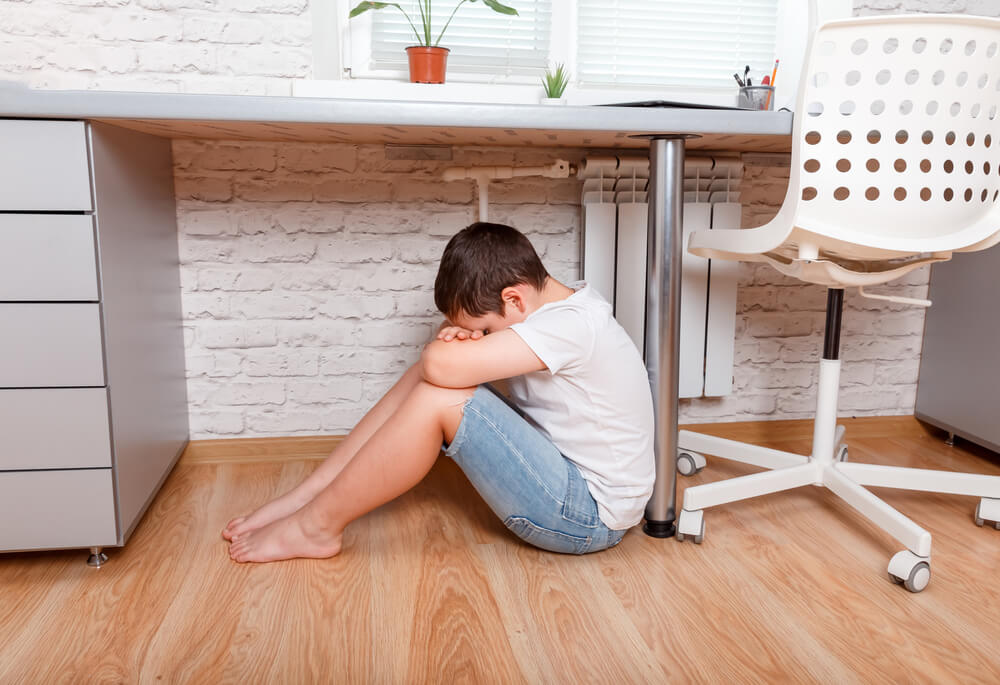How To Stop Daisy Theme From Showing Whole Blog Post

The Internet was originally invented as a resource for communication and exchange of information between scientists from different parts of the world. However, today, it has become available to everyone today and it is now developing very actively. At the moment, almost 60% of people from all over the world can go online, while most of them have accounts on social networks, which has turned into a place of heated debates and discussions on any given topic. Since the online world is inhabited by the same people as the offline one, conflicts become inevitable. "Bullies" begin to appear on the Web, taking pleasure in humiliating other participants of discussions. This phenomenon is called cyberbullying.
How to avoid bullying, how to protect yourself from offenders? Do any punishments exist? How to protect your children? Today we will outline and discuss these and other issues.
Contents:
- What is cyberbullying?
- The actors of cyberbullying
- Types of cyberbullying
- Why do people do that?
- The dangers and effects of cyberbullying
- How to stop cyberbullying: tips for victims
- What if my child has become a victim of cyberbullying?
- What if my child is an aggressor?
- Will you be protected by law?
- Prevention of bullying on the web
What is cyberbullying?

The term "cyberbullying" was introduced by psychologists in the mid-1990s to describe bullying in the online space, right at the time when the Internet hit the masses. Cyberbullying can take many forms, ranging from insults and stalking, to blackmail, harassment, defamation, and theft of personal data. All of the forms mentioned above may cause psychological trauma to the victim.
Cyberbullying can take the two following forms:
- Public: in the presence of "viewers", for example, during a discussion under a post.
- Personal: insults come through private messages.
Unlike regular bullying in the real world — cyberbullying occurs on the Internet and often does not go beyond online. However, when it comes to bullying collectively (for example, in a classroom), the types of bullying complement each other, exacerbating the victim's position. Nevertheless, whereas everyone sees and knows the bully in real life, the person may stay anonymous on the Internet.
It is important to note that cyberbullying is a long and systematic process. A single unflattering or angry comment cannot be considered bullying.
Who becomes the aggressor and the victim? As a rule, middle and high school students are more likely to encounter cyberbullying, since it is during adolescence that children try different forms of dominance in a group. Teens do not know how to express their feelings and emotions in the right way at this point, which leads them to release aggression in a socially acceptable way. Nevertheless, this does not mean that any other age group of network users cannot be bullied.
The actors of cyberbullying

The bullying process (both online and offline) always involves several actors. Let's take a closer look at their characteristics.
The aggressor
The person who attacks the victim, as a rule, is not confident and is afraid to become noticeable. They want to feel better than others, not for their own particularities, but rather at the expense of bringing the other person down (the victim). If in the past, more physically developed males became bullies, nowadays, with the development of technology, anyone can think that they can assert themselves at the expense of others.
By using what the Internet has got to offer, the aggressor can hide under different accounts, as well as get accomplices; this increases the amount of harm done to the victim. The concept of staying anonymous encourages the attackers to allow themselves to do more than they could do in real life.
The victim

Any person can become the victim of a cyber attack. In fact, a very large number of people have experienced this phenomenon online. According to the data, today, a staggering 1 in 3 teenagers have experienced cyberbullying, and 25% of children have faced repetitive bullying.
Media personalities are also widely familiar with cyberbullying. For example, the actively developing "cancel culture" (boycott of a certain person by the public) in Western countries is increasingly turning into real persecution for well-known people, from which they cannot hide. Most often, no amount of apology or excuse can save them from the anger of the crowd.
As a rule, the victims are anxious and fearful teenagers. They have few acquaintances and friends who could come to their rescue. Low self-esteem only supports their belief that everything said by the aggressor is true, and that there is simply no way to fight back. Their high level of anxiety does not allow them to work on themselves. Therefore, the aggressor quickly spots the "painful traits" of the victim and begins to destroy their life in a systematic manner.
The witnesses

It is important to mention another actor in this conflict — the witnesses. Even without being an aggressor or victim, cyberbullying can often be simply spotted on the Internet, and this could be a serious test for a fragile child's psyche. Witnesses can take one of the sides by becoming an "aggressor's assistant" or a "protector", or they can stand aside.
- "The aggressor's helpers" are very conformable, as they would agree with the opinion of the majority of the people. They are ready to carry out the instructions of the aggressor and are afraid to be in the victim's place;
- "The protectors" — cyberbullying participants are doing their best to stop the bullying and to find ways of reconciliation. They are non-conflicting and want a comfortable existence within the group of people. These are people with good self-esteem who are not looking for trouble.
Numerous studies exist, some of them contradict each other. They argue whether boys or girls are more likely to become the victims and the aggressors, therefore, gender is not likely to be a fundamental factor when it comes to cyberbullying.
Types of cyberbullying

Cyberbullying on the Internet exists in various forms and under different names. Let's discuss each of them in detail.
Тrolling
It is not exactly bullying, but rather a kind of a "tough challenge" and a "competition" in humor. As a rule, the troll does not care with whom and for how long to "compete". If a more witty remark comes in response, or if the comment is completely ignored, the "humorist" will go elsewhere in pursuit of appreciation and recognition.
Flaming
This is also not harassment yet. It is a single outburst of anger towards a person that is expressed with an offensive comment or harsh criticism. As a rule, the authors of such rude messages do not need an answer. They pour out their reaction to a certain product (such as a post, an article, a video, a photo, etc.) and move on, forgetting about your existence immediately.
Hating
It comes from the word "hatred", and it stands for full-fledged persecution against a person in the online space. The victim is literally showered with offensive messages and comments through social networks, instant messengers, video hosting, etc.
Harassment

This is bullying with clear sexual connotations. The person begins to receive messages with photographs and videos of a sexual nature, as well as inappropriate calls and messages. It can take place as a form of revenge, in which an ex-boyfriend or girlfriend begins to threaten to upload photographic or video files of an intimate nature of the victim, for everyone to see.
Defamation (dissing)
It is the dissemination of inaccurate information and rumors about the victim in order to cause maximum damage to their reputation. Fake chats and photoshopped images and posts with distorted information can all be created for this purpose.
Identity theft
This occurs through hacking the user's page or creating a copy of it and spreading negative false information. Offensive messages may also be sent to friends, teachers (in the case of schoolchildren), etc, on behalf of the victim.
Boycotting

It often happens within a real group of people. The victim is excluded from public groups and chats, depriving them of the opportunity to participate in discussions and express their opinion. Any little thing that distinguishes the child from the rest of the group can become a reason for a boycott.
Publication of personal information
This refers to any information published on the Internet about a person that is not in the public domain that can have serious consequences for the victim. For example, it is enough to "leak" the home address of a famous person to cause them great trouble, up to force them to change their place of residence. Moreover, uploading photos of an intimate nature or of a source of income on the Web without the permission of a person is a form of bullying too.
Cyberstalking
It consists of prolonged online harassment, accompanied by death threats and sexual harassment. The aggressor follows their victim literally everywhere on the web by commenting on photographs, joining the same groups, and finding out information about the victim from friends.
Open attacks and threats of harm
These are comments and messages that contain descriptions of physical violence in a direct or indirect form, often going as far as having attempts to track down the victim in the real world.
Cyberbullying is often not limited to one type of bullying, it is multifaceted as it all depends on the imagination of the bully.
Why do people do that?

The reasons for starting to bully the victim can be completely different, for instance, resentment, envy, or anger. However, the catalyst for putting work into action is the anonymity and the permissiveness of the Internet environment.
Some of the aggressors may have been initially afraid to be among the victims and therefore they've made the decision to attack first. This often happens to witnesses of bullying. By humiliating other people, they intend to join a stronger group or even lead it. If the goal consists in asserting themselves in the role of a leader, then the abuser is more likely to use their personal account, rather than an anonymous identity.
Representatives of other cultures and nationalities are often the objects of ridicule. Lack of competent initiatives to bring a class together at school can lead to open conflicts on ethnic or cultural grounds.
Anonymity and quasi-limitless possibilities allow insecure, weak, and embittered users to posit themselves as powerful and smart people on the Internet. Such people, as a rule, choose their victims among those who are superior to them in some way.
Revenge is also a frequent trigger for cyberattacks. An offended friend, partner, ex-boyfriend, or girlfriend may initiate bullying to avenge their own grievances, real or imaginary. Previously close relationships with people allowed bullies to learn a lot of personal information about the victim, which worsens the situation.
The dangers and effects of cyberbullying

First of all, huge damage is inflicted on the psyche of the victim of cyberbullying. Social ties are torn (at least, it seems so to a teenager), anxiety increases, headaches, nightmares, and mood swings start occurring. The teenager may also develop depression and suicidal thoughts.
The aggressor who fulfills their unhealthy desires over and over again, enhances their own negative traits, thus aggravating their psychological problems. Remember that a mentally healthy person will never bully people, either in real or in virtual life. Subsequently, a bully will find it difficult to build healthy relationships with other people in the future.
Witnesses are also traumatized when placed in a conflict environment. Most children are forced to take the position of the aggressor in order not to become a victim. If a "defender" appears in the group, then they have to withstand colossal pressure from the aggressive majority.
Unfortunately, cyberbullying most often begins in a school environment. Therefore, parents and teachers should pay close attention to the atmosphere in the classroom.
How to stop cyberbullying: tips for victims

If you've encountered bullying, take steps to preserve your own identity immediately. The sooner you start building up your defense, the less damage you will be dealing with later.
- The first message can be ignored or a complaint can be sent to the social or messenger support team. If it was just trolling or flaming, then ignoring would be the best way to defend yourself. Remember that you cannot be perfect for everyone, and if so, why try for the sake of someone who you don't know?
- If it seems to you that you are being bullied and humiliated systematically by one person, protect yourself from this person. Almost all messengers and social networks have the functions to submit a complaint or to block a person.
- Even if you communicate with a person close to you, try not to transmit personal information through social networks and instant messengers to them, as they can be used against you. Remember that absolutely anyone can be on the other side of the screen.
- At the workplace, do not be afraid to report what is happening to your superiors and try to resolve the conflict at an early stage. Do not be afraid to discuss this issue with colleagues, friends, and loved ones. The more people learn about the bully at an early stage, the less harm the future potential victims will receive.
- If you switch jobs, and aggressors appear over and over again, it may be time to revise your personality. What traits attract bullies that much? Perhaps a little work on yourself will allow you not only to get rid of bullying but also to reach a new professional level.
What if my child has become a victim of cyberbullying?

All parents want their children to be healthy and happy, as well as for them to have friends, a good class, the best teachers, and for their school years to become memorable and fun. However, unfortunately, this is not always the case.
Unfortunately, lots of children face bullying at school, in their peer group, or on the Internet. According to statistics, in the US, 64% of children do not tell their parents that they are facing such problems.
Signs that a child is being bullied online:
- The child began to spend less time on the phone, or, conversely, started using it too often.
- The teenager feels visibly depressed, irritated and upset after being on the Internet.
- The child becomes anti-social, does not want to make contact, and does not want to talk to their parents.
- The child's academic performance is degrading.
- Their appetite is disturbed, headaches and other psychosomatic disorders appear.
After having noticed changes in the teenager's behavior, parents need to try to bring their child into a conversation about what is happening. No need to put pressure or spy on your child: just tell them that you are always there and ready to help them. Sometimes it is difficult for a child to admit that they have become a victim of bullying, especially if they are being blackmailed with photographs or personal information at the same time. Invite them to write you a text or record an audio message and promise not to punish or scold them for what they will confess to you.
As soon as bullying is confirmed, tell your child that this is not a normal situation and that you must stop it together.
Modern technology can assist you in this situation. You will either be able to check if your child is being bullied offline or online or to get evidence of bullying and use it against the bully in the future. Make sure to know which apps the child uses and how much time they spend on them, know where they are, and listen to what is happening around them with the Find My Kids app.
The plan of defense

Together with your child, find the functions to "complain" or "add to blacklist", they are available on almost all Internet resources. It will work almost instantly for "occasional bullies". If rumors, videos, or photos are spread through a community or a chat, and there is no way to remove the insults, contact the admin of the community or the website with a request to remove unwanted content.
- Teach your child to block unwanted visitors on their social media. Find together the functions to "complain" or "add to blacklist", they are available on almost all Internet resources. It will work almost instantly for "occasional bullies". If rumors, videos, or photos are spread through a community or a chat, in which there is no way to remove the insults, contact the admin of the community or website with a request to remove unwanted content.
- Customize the page on the social network and increase its security level. Remove all personal information that may become available to the aggressor. Prevent other users from tagging your child in photos and videos.
- Do not respond to cyberbullying and do not enter into a conversation with the abuser. The goal of the aggressor is to receive as many emotions as possible in response, thus highlighting their superiority in their mind. Ignoring their actions will push them to either make a mistake, for which they can be prosecuted or to lose interest in the victim.
- Try to find out who exactly is bullying your child. This will allow you to punish the abuser.
- Make screenshots of conversations, comments, and other materials that will allow you to give your words some extra weight.
In the United States, 44 out of 48 states have got a criminal sanction for cyberbullying or electronic harassment in place. Therefore, such actions can be considered as a basis for initiating a criminal case in the presence of threats or harassment. It should also be remembered that notarized screenshots are required to make a case. However, if bullying takes place within the school, it will be enough to show simple proof to the school's management. - Since cyberbullying often happens inside the classroom or the school, do not be afraid to involve the class teacher, social educator, psychologist, or the school headmaster to solve the problem. This issue needs to be addressed to help children build relationships in the classroom and to stop the bullying.
Remember that a trusting and warm family relationship will allow the child to turn to you for help at an early stage and hence to receive minimal harm from cyberbullying.
What if my child is an aggressor?

As we already know, aggressors are people seeking to assert themselves at the expense of weaker people. If you notice that a child is showing aggression for no apparent reason, such as offending other children on the street, or perhaps trying to hurt you, you should not let the situation go. The simple punishment of "a week without a phone" is not enough here, and in some cases, it will only do harm. Aggressive behavior in a child under three years old is normal, due to their unconscious reactions, however, the older a person gets, the better they learn to manage their emotions, including anger.
Thus, if the child is too aggressive, it is necessary to seek the help of a psychiatrist in order to exclude the pathology of the nervous system. If the child is healthy, you have to work directly with family relationships and relationships within the class (if there is evidence of problems at school). Of course, it is necessary to ask for the support of teachers and school administration and to understand what exactly the child is trying to achieve with their behavior. It can be the willingness to attract attention, whilst being in a vulnerable position, or to take a leadership position.
If a teenager is vulnerable, it is necessary to help them to get support and help without the use of force. Praise them for correct behavior more often and ignore aggressiveness. Learn to deal with outbursts of anger and aggression in socially acceptable ways (beat the pillow up, count to ten, etc.). Another way is to enroll them in sports, where they can pour out their energy.
If your child seems to be a leader striving for power, help them to understand that fear is not a sign of respect and love. Show that an attentive, calm, and balanced leader will always be more valuable than any tyrant. Moreover, try to find opportunities to apply your leadership skills, for example, by inviting your child to join the student council.
Will you be protected by law?

Today, 44 of the states in the US recognize cyberbullying, and federal law is being proposed at the moment. Each of the 44 states provides a definition of the term "cyberbullying" from a legal perspective. Initiatives with regards to reporting bullying and anti-bullying preventative schemes, along with psychological assistance, are being provided within the communities. Moreover, some more serious offenses and cases of harassment are reported to the police or the FBI.
In order to have a foundation for your case, it is necessary to put together as many facts of malconduct as possible, such as correspondence, screenshots, etc. All this must be notarized in order to be taken into account in a hearing. It is also necessary to indicate and record the exact dates and times of the events that occurred and to provide the necessary Internet links.
Prevention of bullying on the web

Remember that a trusting and warm relationship in the family is what will allow the child to turn to their parents for help and advice immediately. Teach children to communicate online in a safe way. Speak to them about the following things:
- why it is so important to keep personal information confidential;
- what to look for when selecting photos and videos to post on the Internet;
- the settings of social media and instant messengers so that strangers cannot get into contact with the child without their consent;
- the differences of bullying in life and on the Internet so that the teenager knows what it is, which will allow them to react before the situation gets out of control;
- teach your child to say "no".
Unfortunately, children that are experiencing communication problems are most often chosen as targets for bullying. Therefore, try to teach your child to interact freely with other people. Communication skills are what will protect your child and enable them to achieve a lot in the future.
What could be said in the end? The Internet has given all people the opportunity to communicate and speak up. Unfortunately, not everyone knows how to behave in a civilized way when using it. The task for adults is to teach children to communicate both in real and virtual life, defend their rights, express their thoughts correctly, criticize without insults, find compromises and remain good people even under the guise of anonymity. In order to achieve this, all parents need to maintain a trusting and friendly atmosphere in the family!
Получите чек-лист подготовки к школе на свою почту
Письмо отправлено!
Проверьте электронный ящик
How To Stop Daisy Theme From Showing Whole Blog Post
Source: https://findmykids.org/blog/en/children-and-cyberbullying-what-is-it-and-how-to-stop-it
Posted by: moorerthund1988.blogspot.com

0 Response to "How To Stop Daisy Theme From Showing Whole Blog Post"
Post a Comment